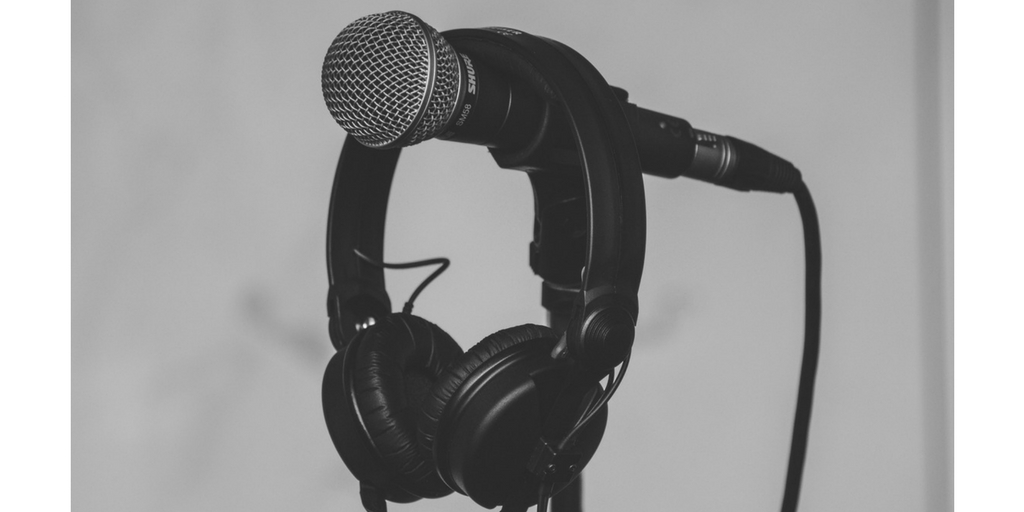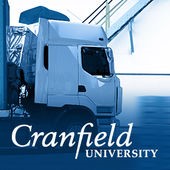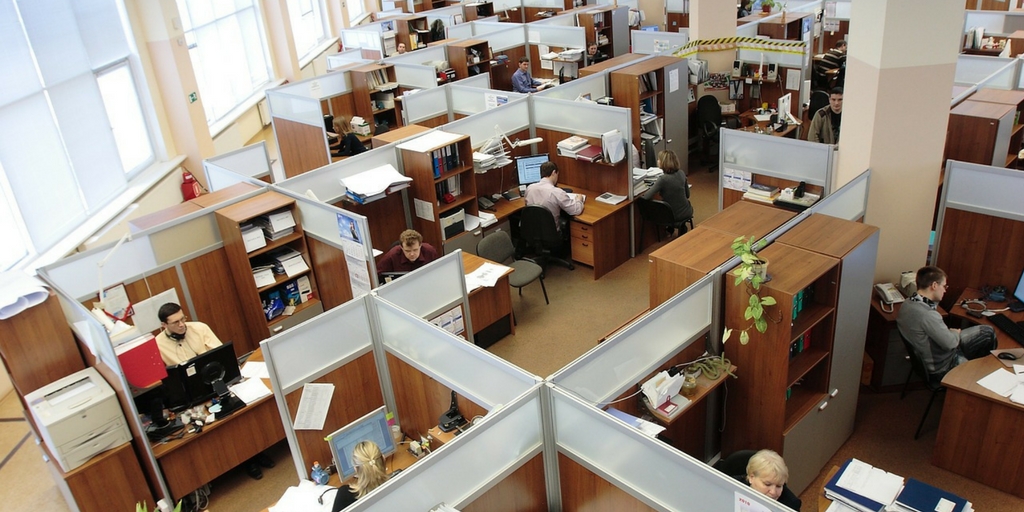
by Fronetics | Jun 21, 2017 | Blog, Current Events, Logistics, Manufacturing & Distribution, Supply Chain, Transportation & Trucking
This post comes to us from Kevin Jessop of Cerasis, a top freight logistics company and truckload freight broker.
The Paris Climate Agreement. Let those words hang for a moment.
Throughout the course of the 2016 election and now the Trump Administration, many Americans have expressed dissatisfaction with the Paris Climate Agreement. True to campaign promises, the new Administration has started the process of removing the U.S. from the agreement, which has major implications for supply chains and shippers around the globe. While the Trump Administration’s impact on supply chains has been discussed previously on Cerasis’ blog, the president’s decision to leave the agreement has shocked the industry, and you need to understand why and what is really going to happen over the next four years.
What Is the Current State of the U.S. in the Paris Climate Agreement?
This may come as a shock, but the Paris Climate Agreement has only been in force since November 4, 2016. As a result, the U.S. has not yet enacted changes under the agreement. The only measure that would have fallen under the Agreement’s terms is the continuation of Customs and Border Protection’s (CBP) rules for maritime statutes.
Lawmakers would have likely passed new legislation to increase environmental scrutiny of supply chains and shippers over the next few years. Moreover, the U.S. would have sent monies to Convention of Countries within the Agreement to help fund eco-conscious goals. The Administration’s actions indicate such changes are not likely to occur, but they could still happen. But, how?
What Is the Timeline for Withdrawal?
The full text of the Paris Climate Agreement is available online through the United Nations Framework Convention on Climate Change (UNFCCC). Article 28 defines the process through which a member of the original Convention may withdraw from the Agreement, and it is a surprise to many to learn that the new Administration cannot simply flip a switch.
Article 28 states that any country wishing to withdrawal may only do so after three years have passed since the agreement went into force. Since the enforcement date was November 4, 2016, a country cannot submit a notification of withdrawal until November 4, 2019. Now, there is another side of the withdrawal.
To prevent countries from withdrawing due to political changes and safeguard the longevity of the planet, any withdrawal still requires a one-year term from the date of notification. In other words, the Administration cannot effectively withdraw from the agreement until at least November 4, 2020.
The 2020 Presidential Election is scheduled for November 3, 2020. This means that if President Trump follows through with submitting a notification of withdrawal in 2019, actual withdrawal will not occur until the day after the 2020 election. Therefore, the question becomes, “How would a notification of withdrawal play out during the election? And if so, will it help or hurt his chances or re-election?”
The precedent for polarization during the previous election cycle indicates President Trump will proceed with plans to withdraw the U.S. from the Agreement when the time comes. The June announcement is merely a call to action to prepare for withdrawal over the next few years. So, what does that mean to both domestic and international supply chains?
The Impact of Withdrawal on Supply Chains.
There are only three countries on the planet, counting the U.S. intention to withdraw, that are not part of the agreement now. This means that every foreign-originating business transaction with U.S. manufacturers, distributors or other partners, except for Syria and Nicaragua, will be at risk. The governments of other countries may look unfavorably at working with U.S. companies due to the new Administration’s plans.
Multiple big-business empires, ranging from Facebook to Goldman Sachs, have condemned the move to withdraw. According to BBC News, part of their rationale is simple. The changes the Agreement dictates reflect existing concerns and actions that many U.S. businesses, including shippers, have already undertaken. Even ExxonMobil, a company whose previous CEO holds the title of Secretary of State, urged the new Administration to remain in the Agreement.
These major companies have already invested time and money in energy-efficienct, eco-conscious programs, and many of their business-to-business partners have followed the same pattern. With the overwhelming majority of the world’s countries committing to this cause, there will be an opening of the “floodgates for businesses, scientists and engineers to unleash high-tech, low-carbon” technologies. As a result, the U.S. could fall further behind the global engineering and science goal, which helps all businesses succeed. In other words, domestic companies may have a more difficult time finding the labor or technologies needed to maintain profitability in the interim.
Is There a Much Darker Side to Withdrawal?
Without getting into a discussion on the science behind global warming, it is important to note things that have happened that may continue if global warming continues. For example, sea levels had risen 2.6 inches from 1993 to 2014, reports the National Oceanic and Atmospheric Administration (NOAA). If left unchecked, numerous ports, businesses, cities and whole seaboards could be lost in the next few decades. To ensure stability and growth along long-term goals, this is a risk that must be mitigated immediately.
The rising sea level is a fact in the heavily disputed conversation about global climate change.
For shippers and supply chains, the risk of not doing anything is too great. Thus, the new Administration means well, but withdrawing from the Agreement is not a change that will impact businesses before 2020. Furthermore, the backlash from the public toward companies that abandon eco-conscious goals could be severe. Shippers could face higher tariffs and additional troubles in shipping goods domestically or abroad.
It is in your company’s best interest to pursue energy-efficiency goals, including working with well-known partners, like Cerasis, to help you reduce waste, eliminate redundancy and continue making healthy profits throughout the future, regardless of who sits in the Oval Office.
This post originally appeared on Cerasis’ blog.
Related posts:

by Fronetics | Jun 15, 2017 | Blog, Content Marketing, Logistics, Marketing, Social Media, Supply Chain
A global marketing survey finds that many businesses are focusing on these initiatives and challenges.
As more supply chain and logistics companies understand the benefits of content marketing, more are turning to this type of marketing strategy to build brand awareness and grow business. One of the functions of this blog is to update you on various marketing trends to help you keep pace with the rapidly evolving digital marketing landscape.
The State of Inbound has been tracking global marketing and sales trends for the last eight years, with a particular focus on inbound marketing. (Content marketing is a form of inbound marketing.) The 2017 survey included more than 6,300 professionals at from 141 countries — so it’s very comprehensive.
There’s a lot to look through in the full report, but I’ve pulled out a few of the most important takeaways that speak to trends we’re finding most relevant to our supply chain clients.
5 takeaways from the State of Inbound 2017
1) Inbound marketing results in higher ROI.
The vast majority of respondents (46%) agree that inbound marketing helps them achieve higher ROI, as opposed to 12% who say outbound marketing achieves a higher return. (For the record, 23% can’t or don’t calculate ROI, and 18% don’t know.)
If you’re not convinced about the benefits of an inbound strategy like content marketing, here are 5 reasons supply chain and logistics businesses need to use content marketing.
2) There is a growing chasm between leadership and employees’ perception of success.
Executives who set the strategy and vision for their companies perceive things differently than the employees executing that vision. For example, while 69% of C-suite executives believe their organization’s marketing strategy is effective, only 55% of individual contributors do.
Are executives seeing benefits of marketing they’re not sharing with the team? Or, do they have misconceptions about how things are working? Either way, there seems to be room for improvement regarding transparency and communication from the top down and bottom up.
3) Gaining customers is a top challenge.
When asked about their top marketing challenges, 63% of respondents agree generating traffic and leads was their biggest concern. (Proving ROI of marketing activities was second with 40%.)
We hear this all the time. Our first response is usually, if you want more leads, focus on brand awareness. Secondly, it’s important to make sure your content strategy closely aligns with your business goals and that you’re creating content that suits your target audience at various stages of the buyer’s journey.
4) Video marketing is the next big investment.
When asked about expansion to new content distribution channels in the next 12 months, respondents most often said they plan to add YouTube (48%) and Facebook video (46%). This reflects the growing popularity of video as a content medium — and YES, it can work for the supply chain and logistics industries.
We’ve written extensively about this topic. Here are a few posts that may interest you if you’re curious how video might fit in your content strategy.
5) Companies need to focus on sales and marketing alignment.
Only 22% of respondents say their sales and marketing relationship is tightly aligned. That’s a big problem.
Sales and marketing teams that are aligned perform better. In this survey, for example, sales teams closely aligned with their marketing counterparts ranked the quality of marketing-sourced leads much higher than those that were rarely aligned or misaligned. That shows that when marketing and sales work together, everyone gets more of what they’re looking for — namely, leads!
Looking at these 5 trends, how does your company line up? Do these challenges resonate, or are you focused on other initiatives and problems?
Related posts:

by Elizabeth Hines | Jun 14, 2017 | Blog, Current Events, Logistics, Strategy, Supply Chain, Transportation & Trucking
Startups and transportation juggernauts alike are entering the race toward the self-driving truck, but no two strategies look alike.
There will come a time in the not-so-distant future when — instead of using a CB radio to communicate with a freight driver — you will use a line of code. A recent study conducted by the White House concluded that at least 80% of trucking jobs will be lost to automated technology.
Companies such as Otto (Uber’s robot division), along with start-ups Starsky Robotics, Embark, and Drive.ai are championing the cause of self-driving trucks. These companies are hoping to capitalize on an industry that needs revitalization. With a shortage of about 75,000 jobs and a turnover rate that tops 90%, the current climate is ripe for change.
Self-driving doesn’t mean driverless
Trucking is a $700+ billion industry, with about a third of the costs going to driver compensation. It stands to reason that there is serious incentive to get this technology rolling out onto the highways, removing the need for drivers. However, so far, most plans don’t seem to involve going cold turkey.
Both Otto and Embark will have the automated system take over for the driver when the truck is up and running on the highway. Then once the truck exits, the driver returns to the controls. The benefit of this system is the ease of which the automated driver can navigate highways, as opposed to local roads. Additionally, this system will put less stress on the driver, who can rest while the truck is on the highway.
Starsky Robotics, while not looking to do away with drivers, wants to remove them from the trucks. Starsky’s trucks will be completely autonomous on the highway. Upon exiting, the job will be turned over to trained experts that remotely guide the trucks to their final destinations. Starsky believes by bringing the drivers off the road, and into offices, freights will run more efficiently and on time, while not putting undo stress onto drivers.
While the competition focuses on long-haul trucking, Drive.ai has begun testing automated freight services on around-town delivery vehicles, which it feels is an easier way to introduce its technology. The company says it is developing software to control trucks using a small computer that “learns” how to drive, rather than using complex computers programmed with every conceivable move the vehicle could make.
Bumps in the road
While testing is underway for many of these technologies, not every course has proved smooth sailing. Most notably, Waymo, Google’s self-driving car project, has filed a lawsuit against Uber, accusing the company of using trade secrets taken by Anthony Levandowski, after he left Waymo to found Otto.
Currently, it’s unclear which company will emerge as the leader in the race to automated trucking. What is apparent, though, is there’s no putting the genie back in the bottle.
Automation technology is only becoming more prevalent. With the trucking industry in its current state, it’s only a matter of time before self-driving trucks become the norm.
This article originally appeared on EBN Online.
Related posts:


by Fronetics | Jun 13, 2017 | Blog, Content Marketing, Logistics, Marketing, Supply Chain
Follow these steps to equip your content writers with all the institutional knowledge and background information they need to create top-quality content.
Content drives consumers to your website, convinces them of the quality of your products/services, and ultimately helps convert those leads into customers. So, it goes without saying, the people writing your content are pretty important to your business.
Some companies rely on various employees, who are known to be good writers, to create their content. These people often struggle to fit writing into their full-time job, or don’t have SEO- or marketing-writing expertise. And if your business needs someone to produce many different kinds of content — like blog posts, emails, reports, articles for industry publications, and other marketing collateral — some non-writers will struggle with the versatility necessary to create it all.
Given that content is the backbone of a content marketing program, hiring a professional writer is crucial. Some companies, however, are nervous about finding content writers who are fluent in the technical language of their business. Or, they’re worried about the time it will take to get someone up to speed on all the ins and outs of the company and industry.
But here’s the thing: Great writing can’t be taught, but subject matter can. And it’s not as difficult as you might imagine. In fact, here are some best practices for turning your content writers into supply chain experts.
3 steps to make content writers supply chain experts
1. Teach them what they don’t know.
It’s easy for a content writer to conduct his or her own research to learn about industry topics, trends, terminology, and other concrete facts and news. But it’s less likely they’ll pick up on all the things that go unsaid in industry media and resources. That’s where you can help.
Provide your writer with information on all the landscape’s inner-workings. Consider answering these questions:
- Who are the key players in this space and why? Who are the most respected voices, and who are otherwise people to watch?
- How does this space make money?
- Who is the target buyer — demographics, pain points, strengths and weaknesses, etc.?
- What ideas are considered old-fashioned or taboo and why?
- What ideas are commonly accepted? Which are starting to become more accepted?
- What regulations or governing principles are relevant in this space?
- How does a company in this space measure success?
- What other internal politics or tidbits about institutional history would be helpful for someone to know?
2. Give them a watch list.
This goes hand in hand with the previous step, but it’s worth elaborating on. You want the writer to know the key players in the space so s/he can become familiar with the content and media your prospects are consuming.
Provide your content writer with a list of the thought leaders in the industry and where they are active (blogs or LinkedIn Pulse, for example); your competitors and their business partners or clients; and industry publications or media outlets that professionals in your business and your clients read on a regular basis. Who are the space’s must-follows on Twitter? Are there podcasts or newsletters that everyone in your line of business subscribes to? Do all of your industry peers receive some kind of publication?
A good writer will glean a lot of information from studying these people, businesses, and publications. They will also understand where the bar is set, and thus be able to strive to achieve that or exceed it in terms of value and quality.
3. Share your data.
The most successful writing teams I’ve ever been a part of have been well informed about business performance. Though writing is largely a creative process, it’s important that writers understand how their contributions are affecting the organization as a whole — whether that’s good news or bad news. They will feel more invested in the success of your organization, for one, but also it will help them adjust what they’re doing to accommodate what’s working and to eliminate what’s not.
You don’t have to get into the nitty gritty of financials, but some general information about how the company is performing is helpful for general knowledge. Otherwise, provide your writers with a regular report on the metrics you use to analyze the success of your content: pageviews, downloads, time on page, etc.
Follow these three steps, and you’ll ensure your writers are fully equipped to create informed, well-written content.
Related posts:


by Fronetics | Jun 12, 2017 | Blog, Logistics, Strategy, Supply Chain
These podcasts bring the latest news and thought leadership in the supply chain and logistics industries right to your earbuds.
I used to think that podcasts were a hip form of new media that millennials used to further their iPhone addictions. Fast forward a few years, and the benefits of having news and entertainment in your earbuds has converted me to a podcast fan.
Podcasts are a series of digital audio files that listeners can subscribe to. Think of it as the DVR of your smartphone. Podcasts, like cable shows, come in all shapes and sizes. Their popularity has skyrocketed since the smartphone became as necessary as car keys, giving you to-the-minute facts and information, right in the palm of your hand.
If you’re looking to increase your podcast listening, here are five that highlight topics of interest to supply chain and logistics professionals.
5 supply chain and logistics podcasts

Talking Logistics is an online video talk show and blog featuring interviews with industry thought leaders and newsmakers by supply chain and logistics analyst Adrian Gonzalez.
Gonzalez runs the show like a conversation with smart friends, making it easy to follow. Featured guests include supply chain and logistics executives from leading manufacturing and retail companies, professors from leading academic institutions, executives from third-party logistics and technology companies, and authors. The show provides supply chain and logistics professionals an interactive and engaging platform to learn and network with other practitioners and thought leaders.

Supply Chain Insights, a research and advisory firm, hosts this weekly podcast that covers a variety of topics, from global thinking to voice of the customer. Many episodes focus on technology and innovation. Nearly all of Supply Chain Insights’ podcasts feature executives and experts sharing their logistics insights. Straight Talk focuses on delivering independent, actionable and objective advice for supply chain leaders.

The SupplyChainBrain podcast features in-depth conversations with industry practitioners, academics, consultants, and other experts from every imaginable aspect of supply chain management and international trade. New episodes of the podcast have been published every Friday since its launch in 2013, touching on important topics like retail shifts, blockchain innovations, labor shortages, and the Internet of Things.

A product of the leading magazine Inbound Logistics, this podcast provides relevant information within the supply chain management world, as told by influential thought leaders in the industry. Each episode features a different special guest, who brings his/her unique opinions regarding topics such as logistics, supply chain, cargo, freight, transportation, and education.

Cranfield University School of Management in Cranfield, England, has nearly 50 years of experience educating business leaders via masters, MBA, executive education, and consultancy programs. The Centre for Logistics and Supply Chain Management is celebrating 35 years of thought leadership in logistics, procurement, and supply chain management. The free podcast, Supply Chain and Logistics Management, covers topics such as logistics and transportation management.
Related posts:

by Jennifer Hart Yim | May 30, 2017 | Blog, Logistics, Supply Chain, Talent
Is the Supply Chain talent gap problem really a talent management problem?
This guest post comes to us from Argentus Supply Chain Recruiting, a boutique recruitment firm specializing in Supply Chain Management and Procurement.
As a recruitment company completely specialized in Procurement and Supply Chain, we’re interested in following the so-called “talent deficit” in the field from all angles and perspectives. The fact is, it’s becoming harder for companies for find the talent that they need for these positions as baby boomers retire and the function evolves. As trade publication Supply Chain 24/7 puts it, “study after study has shown that for every new Supply Chain Manager entering the workforce, two (or more) are retiring.”
It’s a serious issue.
But the more you look at this issue, and the more perspectives you seek, the more you realize how complex it truly is: We’re witnessing a generational shift in the Supply Chain industry whereby more young people are entering the field. Technology has developed rapidly over the past 10 years, with big data, 3-D printing, Blockchain and automation promising to upset the apple cart completely over the next 10. It’s not just that people are retiring. It’s that finding people who have a depth of understanding of how to harness these new technologies is going to be a major driver of company competitiveness over the coming years, and they’re hard to find.
That growing demand is part of what makes Supply Chain such an attractive field for young people who are interested in business that combines global exposure, strategic problem solving, technology, and data. More universities and colleges are offering Supply Chain Management programs. But the skills required are always evolving, and how can the industry ensure that people are adequately skilled when they themselves can’t always predict the technological picture 3-5 years down the road?
Lack of talent management?
There was a thought-provoking blog post on this topic in Supply Chain Management Review this week by Supply Chain Professor Michael Gravier. Titled, “Lack of Supply Chain Talent – or Lack of Talent Management?”, the post talks about the talent deficit from the perspective of someone who’s very much in the trenches of preparing tomorrow’s Supply Chain leaders for tomorrow’s workforce.
Professor Gravier’s point is pretty simple, but pointed: “Young people who go into Supply Chain and manufacturing jobs complain that employers demand creativity during the hiring process, yet have no tolerance for new ideas in the workplace.”
In other words, companies are eager to lock down the highest-potential candidates — which only makes sense because of course you want the best talent, and of course you don’t want that talent going to your competitors. But once those candidates are placed? In Gravier’s eyes, organizations don’t necessarily take the next step and let them contribute in a creative way. For Gravier, millennial workers — especially high performers — specifically demand a higher level of engagement and skill growth than employers might be accustomed to. And, by putting these new workers in transactional roles without much opportunity for growth, companies are jeopardizing their long-term talent goals and putting themselves in danger of falling behind.
As Gravier puts it: “There’s evidence that companies show little commitment to developing and rewarding needed skills, and companies hire top-notch graduates in order to avoid having to deal with people problems later, which shows that there’s likely insufficient training and support as personnel move into supervisory positions.”
The reality for Supply Chain
A few things are worth mentioning from our perspective: for one, there’s always going to be a low person on the totem pole at any company. Workers have always had to “pay their dues” for the first couple years of their career, no matter the field, whether it’s doing dishes or preparing purchase orders. So it’s a bit unreasonable for recent Supply Chain grads to expect highly strategic roles right out the gate. For another, it makes sense for companies to want to hire the best people now, even if it means putting them in roles where they might not be developing as quickly as they would like?
On the other hand, if companies truly want to get ahead of their competitors, doesn’t it make sense to put resources into training, mentorship and skills development?
Whatever you make of his argument, it’s pretty easy to agree on one thing: Companies need to do all they can not only to attract great candidates, but to help them thrive and grow — both to keep those candidates’ eyes from wandering other opportunities, and to unlock the innovation that these candidates can provide.
But what do you think? Are companies developing junior prospects in Supply Chain well, or leaving them in entry-level positions for too long? Are you near the beginning of your career? Or does your company hire a lot of junior Supply Chain staff? Let us know in the comments!













